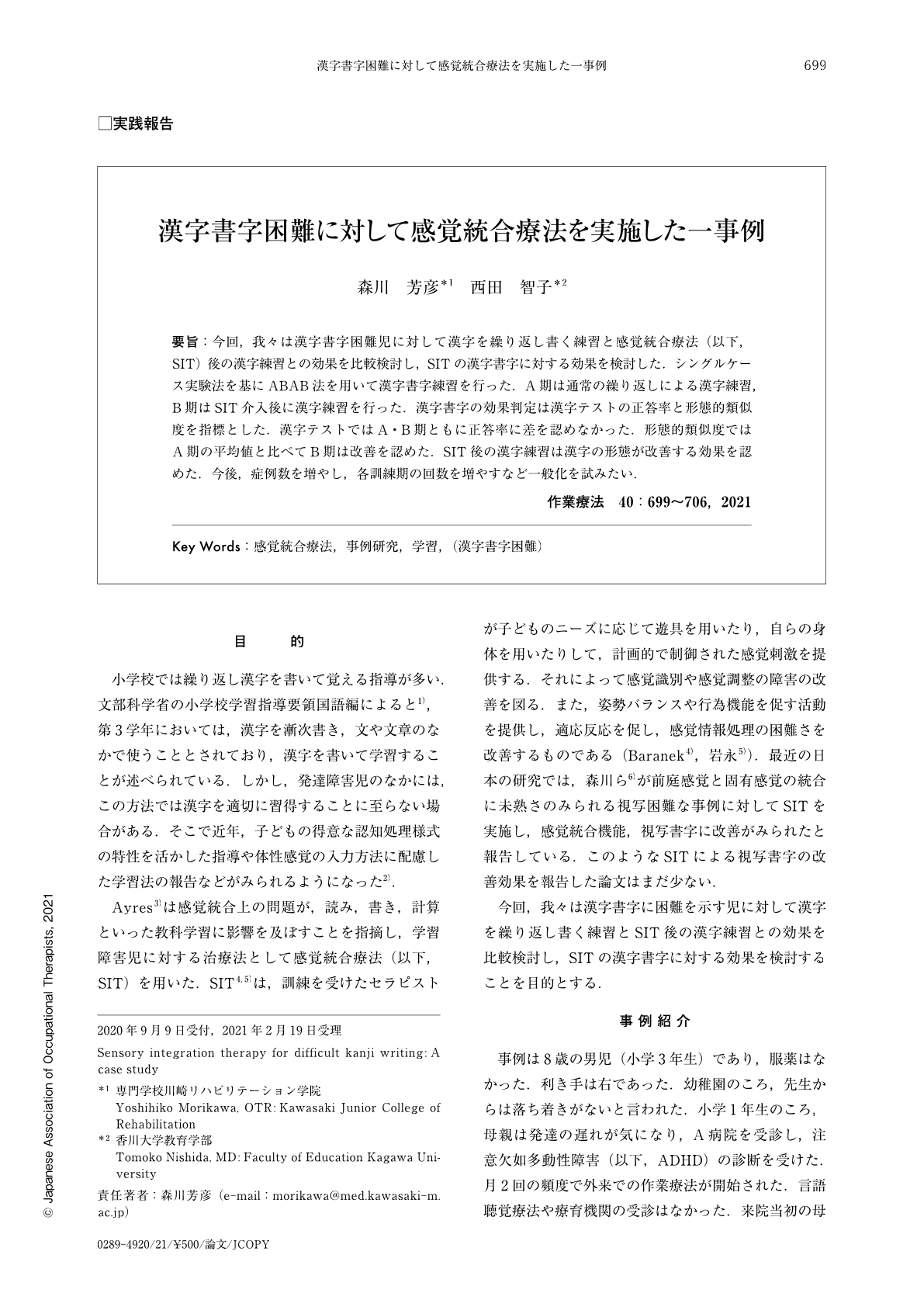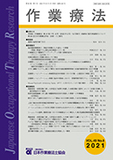Japanese
English
- 販売していません
- Abstract 文献概要
- 1ページ目 Look Inside
- 参考文献 Reference
要旨:今回,我々は漢字書字困難児に対して漢字を繰り返し書く練習と感覚統合療法(以下,SIT)後の漢字練習との効果を比較検討し,SITの漢字書字に対する効果を検討した.シングルケース実験法を基にABAB法を用いて漢字書字練習を行った.A期は通常の繰り返しによる漢字練習,B期はSIT介入後に漢字練習を行った.漢字書字の効果判定は漢字テストの正答率と形態的類似度を指標とした.漢字テストではA・B期ともに正答率に差を認めなかった.形態的類似度ではA期の平均値と比べてB期は改善を認めた.SIT後の漢字練習は漢字の形態が改善する効果を認めた.今後,症例数を増やし,各訓練期の回数を増やすなど一般化を試みたい.
In this study, we compared the effects of repetitive writing of kanji and kanji practice after sensory integration therapy (SIT) for children with difficulty writing kanji. We practiced kanji writing using the ABAB method based on the single case experiment method. We practiced repeated kanji in the A term, and kanji practice after the SIT intervention in the B term. We used the correct answer rate and the morphological similarity of the kanji test as indicators of effect judgment. There was no difference in the correct answer rate in both A and B terms in the kanji test. Morphological similarity was improved in the B term compared with the average in the A term. The practice of kanji after SIT was found to improve the morphology of kanji. In the future, we would like to generalize the results by increasing the number of cases and the number of training sessions.

Copyright © 2021, Japanese Association of Occupational Therapists. All rights reserved.


